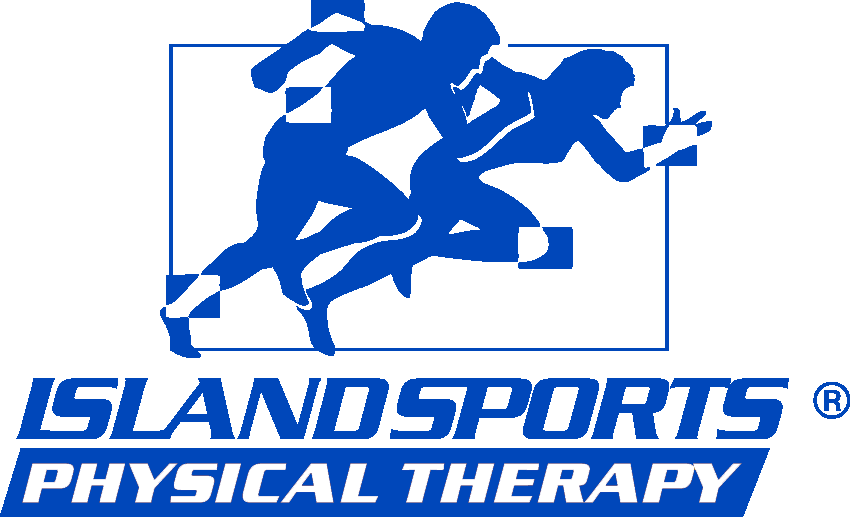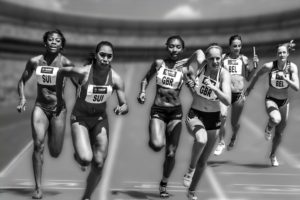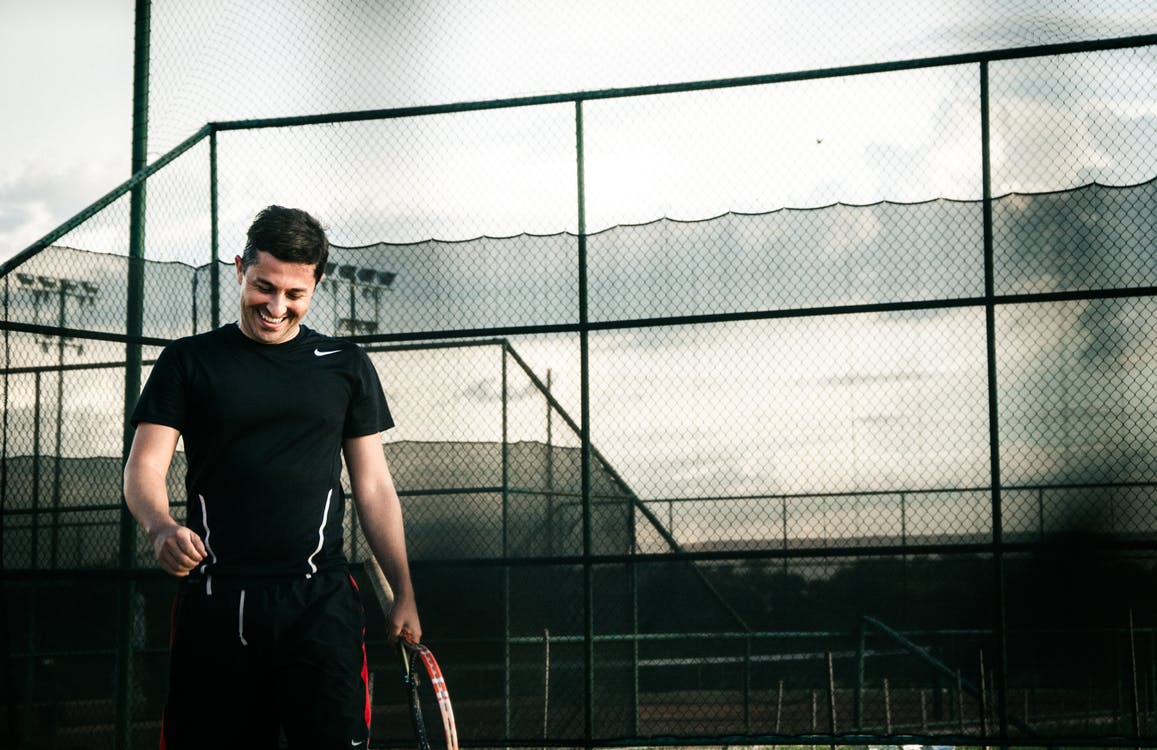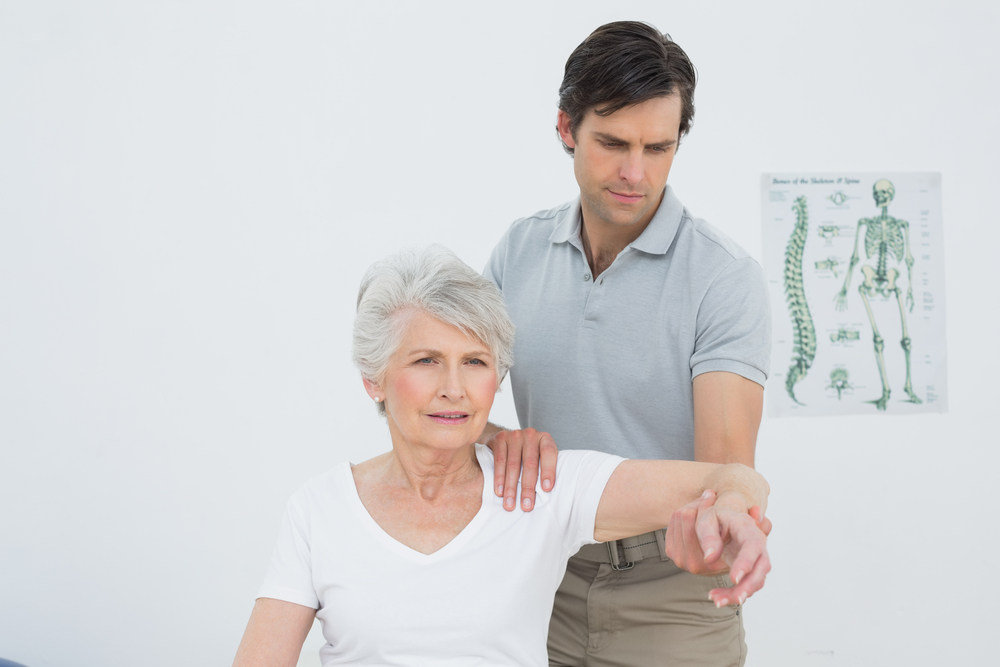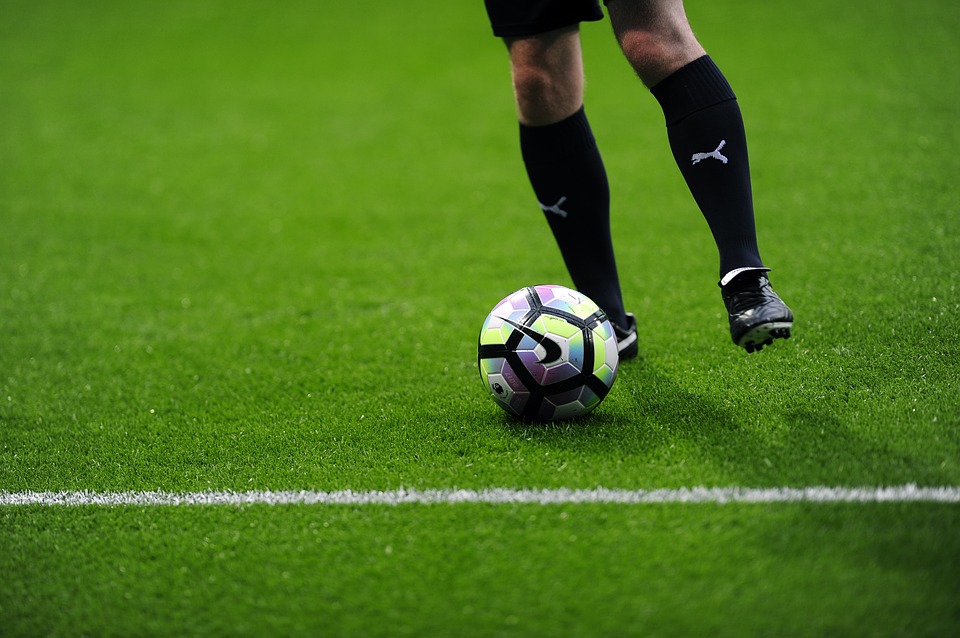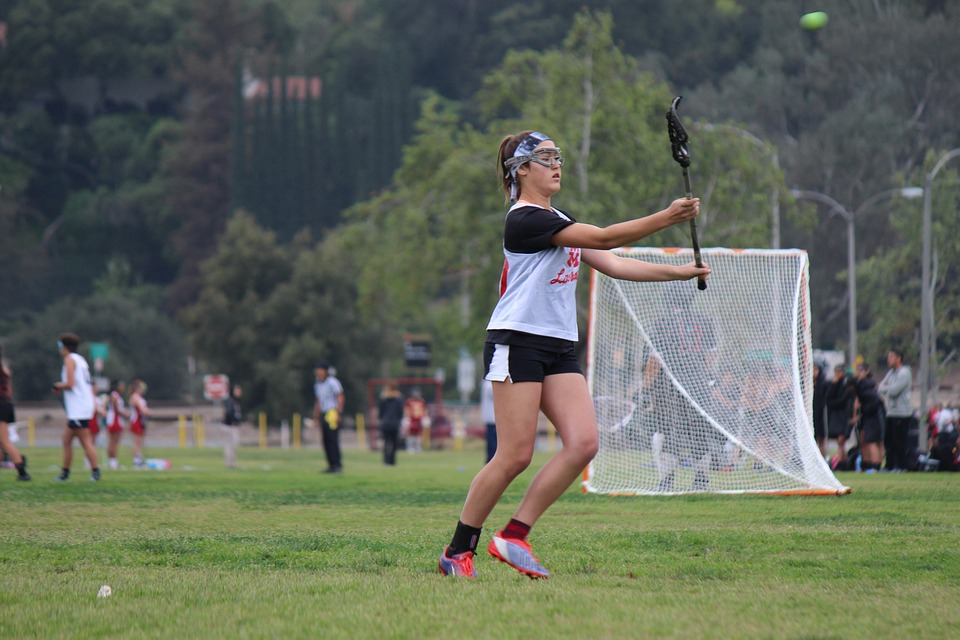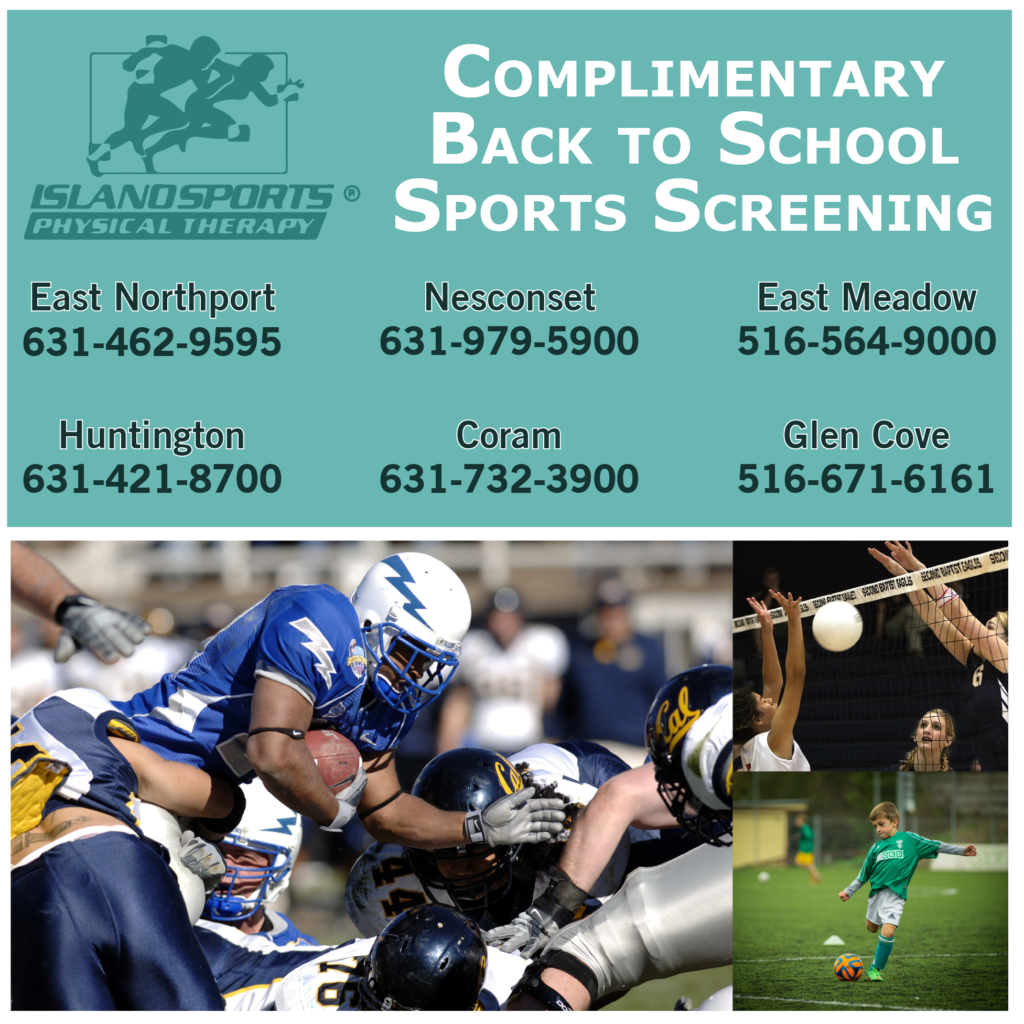What is an ACL Injury?
Your anterior cruciate ligament, or ACL, is an important ligament in your knee because it connects the patella (top portion of the knee) to the tibia (bottom portion of the knee) and gives the knee rotational stability. An ACL injury is one of the most common injuries in sports, and based on statistics, female athletes are 2 to 10 times more likely to suffer from an ACL injury than male athletes. Injuries usually occur from quick movements made by the athlete such as pivoting, cutting, or jumping and landing the wrong way. If you have recently suffered an ACL injury and are looking for Physical Therapy in East Northport, let our team at Island Sports Physical Therapy get you back in the game!
Why are Women More Likely to Suffer an ACL Injury?
While there is no definitive reason why women are more likely to tear their ACL’s than men, there are a few factors that can contribute to this injury. They are:
- Hormones: The estrogen hormone that exists in women can be a potential cause of their ACL tears. High levels of this hormone in the body weaken the ACL, making it more prone to injury.
- Bone Structure: Women are born with wider hips than men so that they have the ability to carry and birth a child. This skeletal structure results in more weight being put on a woman’s knees than a man’s, which can lead to them putting a lot of strain on the surrounding ligaments, muscles, and tendons.
- Muscle Strength: As we mature, women seem to have weaker leg muscles than men do. These muscles include the glutes, buttox, hamstring, and quads. For this reason, it is important that women work on strengthening these muscles in an effort to take the strain off their knees and prevent an ACL injury from occurring.
What Exercises Can I Do to Prevent an ACL Injury?
As mentioned before, the muscles you want to focus on are your glutes, buttons, hamstring, and quads to prevent an ACL injury. Here are some exercises that can be very helpful:
- Squats
- Deadlift
- Swiss Leg Curl
- Glute Bridge
If you are looking for physical therapy in East Northport, let our physical therapists at Island Sports create a personalized program that will focus on strengthening leg muscles as well as improving the flexibility of your knee. Visit our office today!
How to Deal with Tennis Elbow
What is Tennis Elbow?
Tennis Elbow, also known as Lateral Epicondylitis, is a form of tendinitis. Tendinitis is the swelling of the tendons, which in this form, causes pain in the arm and elbow. Despite its name, there is a small group of people diagnosed with Tennis Elbow that actually play Tennis. If you are straining the muscles around the elbow over and over again during any activity, it could happen. If you are looking for physical therapy in Nesconset, Island Sports Physical Therapy will help you not only feel better, but we will educate you on the injury in hopes to prevent future re-injury of Tennis Elbow.
Symptoms:
1. Upper Forearm Pain
This is a very common symptom of Tennis Elbow. On the outer arm, right below the elbow is where this “burning pain” commonly occurs.
2. Is Rest Bringing You Relief?
If you are looking for physical therapy in Nesconset, rest is not bringing you relief and you cannot move your elbow or are even losing feeling in it, contact us for quality care.
3. Pain Variations Throughout Your Day
The morning is usually the time where you will experience the most pain. The stiffness and aching lessen throughout the day but will still continue at some level.
4. Too Much Activity Hurts!
If you have Tennis Elbow, common activities and tasks such as lifting your fork or holding a pen may hurt. Moving your wrist forcefully such as twisting your arm to open a heavy door or repetitive computer mouse use will also cause you pain.
Treatment at our Physical Therapy Practice in Nesconset
- Reducing Inflammation
- Rest
- Reducing Pain
- We will give you pain reducing remedies to do at home, such as icing.
- Ongoing Rehabilitation
- Exercise and other physical therapy treatments to increase your range-of-motion and decrease pain at the same time.
- Bracing/Compression by wearing a counterforce brace for Tennis Elbow. The strap used will spread pressure throughout your arm, instead of putting it all on your tendon causing your pain.
- Working with an expert here at Island Sports Physical Therapy to fit your individual needs.
How Physical Therapy Could Help
DON’T WAIT! The longer you wait to see a physical therapist and perform strenuous activities, the longer rehabilitation will take. Ongoing activity to the tendon can cause damage and could someday require surgery.
How Physical Therapy in Nesconset Could Help
- We will correctly diagnose you
- We will give you “hands-on” care
- We will educate you
- We will give you home remedies that fit your individual need
- We will maximize your performance
Working with one of our experts here at Island Sports Physical Therapy will help specify your injury to know the exact treatments that need to be done. We promise to educate you and give you the best care possible while giving you the information you need about Tennis Elbow and give you ways to prevent this injury from happening again in the future.
National Physical Therapy Month
October is National Physical Therapy Month, and Island Sports Physical Therapy in Glen Cove is getting itself prepared for an important fall season. With many autumn sports occurring as of late, and the changing weather patterns, people may be more prone to injuries and falls. If you or your child has suffered an injury, you may think the first thing to do is to try painkillers in order to heal the pain. The physical therapists at Island Sports Physical Therapy are here to tell you why you should choose physical therapy, instead of turning to painkillers. Continue reading National Physical Therapy Month
Frequent Shoulder Dislocation
The shoulder is among the most mobile joints in the human body. The persistent utilization of this joint is common for athletes that play sports like baseball, volleyball, and swimming, which may cause dislocation. This is due to the constant wear and tear of ligaments and tendons that surround the shoulder joint. At Island Sports Physical Therapy, our physical therapists in our many locations including Huntington, East Northport, Glen Cove, Nesconset, East Meadow, and Coram are here to create tailored rehabilitation programs that will get you back on the court, in the pool, or on the field in no time!
What are My Symptoms?
Once an athlete has dislocated their shoulder, the chances of it dislocating again increase, causing an instability in the joint. The following symptoms of such instability include:
Treatment With Physical Therapy in Huntington, NY
Depending on the severity of the injury, the average healing period for a dislocated shoulder is between 4 and 12 weeks. Our physical therapists in Huntington, NY will conduct a complete assessment in order to create a program tailored to the specific needs that will help you get back in the game! These programs may include exercises that focus on:
- Strength: After a dislocation injury, the muscles around the joint may be extremely weak. Depending on the severity of the injury, our therapists may incorporate certain exercises that will build up those weak muscles.
- Range of Motion: Our therapists will take you through the motions as well as gently stretch you in order to help you gain back that range of motion.
- Your Specific Sport: Our therapists will create exercises that are tailored to your specific sport which can help you regain comfortability with the motions.
Above all, it is important that you give your body a chance to rest once you’ve had a shoulder dislocation injury. Failure to do so will only prolong the healing process and cause the injury to recur. Our physical therapists in Huntington, NY at Island Sports Physical Therapy are dedicated to helping you heal and get you back to your top performance levels. Please visit us at our many locations in Huntington, East Northport, Glen Cove, Nesconset, East Meadow, and Coram or call us at 631-462-9595 today!
Recovering from ACL surgery
An ACL tear happens when the knee experiences sudden twists or changes in direction. People who play high-impact sports are especially susceptible to ACL tears. These sports include but are not limited to soccer, football, basketball, volleyball, etc. When an ACL is torn, there is typically a popping sound, swelling, and pain.
ACL surgery typically features a graft that involves taking a ligament from another part of the body to replace the torn ACL. Recovery from an ACL tear can take anywhere from 6 to 12 months. The help of a physical therapist is crucial to the success of your recovery. Island Sports Physical Therapy has offices all over Long Island in East Northport, Huntington, Nesconset, Coram, East Meadow and Glen Cove. They specialize in sports specific therapy and are more than capable of helping you return to playing soccer after ACL surgery.
ACL surgery recovery features:
- Right after the surgery, you should immobilize your knee to aid the healing process.
- After surgery, you should use ice to reduce swelling of the knee.
- Gradually placing weight on the knee with or without the aid of a knee brace or crutches.
- Your physical therapist will then help you achieve full range of motion with the recovering knee.
- Muscle strengthening exercises will be incorporated into your recovery to help regain strength lost during the immobilization phase.
- The later stages of recovery involve advanced strengthening techniques, advanced cardio exercises, and balance/stability exercises to strengthen the new ACL.
Even though a physical therapist is crucial to your ACL tear recovery, misinterpreting their advice or pushing yourself too fast can do more harm than good. In fact, it can make your recovery longer as well as lead to additional surgeries.
Contact us!
If you’ve had ACL surgery and wish to have a speedy recovery to be able to return to soccer contact one of Island Sports Physical Therapy’s Long Island offices today!
Men’s Lacrosse Injuries
Lacrosse is America’s fastest-growing sport, in the past decade, high school lacrosse has exploded. The sport has four major versions that have different sticks, fields, rules, and equipment: men’s field lacrosse, women’s lacrosse, box lacrosse, and intercrossed.
Although lacrosse is growing at a rapid speed, it also comes with a lot of potential injuries. Due to the different rules between the men and women, it is important to understand how injuries can occur in both versions. Lacrosse injuries are also more common in males because it’s a contact sport. The women’s game does not allow body contact but does allow the stick to stick contact.
Common Lacrosse injuries include:
- Ankle Sprain
- Head and face contusion
- Concussion
- Knee sprain (ACL, MCL)
- Wrist fracture
- Hip flexor strain
- Low back pain
- Shoulder separations
- Shoulder subluxations
- Quadriceps strains
Overall, lacrosse is a moderate risk sport in which the vast majority of injuries can be corrected by a physical therapist. That being said, a number of common injuries do occur in both men’s and women’s lacrosse as a result of contact with a player, another stick, or the ball.
Some ways to prevent injuries are, wear the right equipment, know the rules of the game, take a break, and report all injuries. Also stay in shape all year round and warm up properly by thoroughly stretching and gradually increasing the intensity of the workouts.
With any injury, participation should be stopped until an assessment is made by a qualified health professional. For athletes who have experienced a sports-related injury such as lacrosse, Island Sports Physical Therapy will help to speed up recovery and restore function. So the player is ready to get back in the game.
At Island Sports Physical Therapy we believe that patients need to coincide with their physical therapy and treatment.
Common Women’s Lacrosse Injuries
Women’s lacrosse, one of the most popular sports in North America is known for causing many injuries among its players. Island Sports Physical Therapy in Huntington, East Northport, Nesconset, East Meadow, Glen Cove, and Coram, treat many women who have suffered from common lacrosse injuries. The most important thing Island Sports Physical Therapy focuses on is a fast and full recovery for their patients, and making sure that they are able to get back to playing as soon as possible. If you play lacrosse in Huntington, NY, Island Sports Physical Therapy can help treat a wide variety of injuries.
Lacrosse is known as a moderate risk sport and the majority of injuries are sprains, strains, and bruises, however many other serious injuries also occur such as
- Ankle sprain
- Head or face contusion
- Concussion
- Knee sprain (ACL, MCL)
- Wrist fracture
- Hip flexor strain
- Low back pain
- Many more
It is important for women’s lacrosse players to cease activity that uses the injured part of the body in order to prevent it from getting any worse. Often times the injury occurs because of repetitive motion or continuously injuring the same area. Lacrosse requires a lot of stopping and starting, sprinting and vigorous exercising that can get the culprit of the injury.
The good news is that there are many ways to prevent women’s lacrosse injuries and there are also many ways to treat these injuries. It is important for women’s lacrosse players to stay in shape even during the offseason in order to keep their muscles conditioned to the hard workouts during the season. This helps to prevent many injuries because the body is not shocked when it needs to perform during the season. Some other ways to prevent and treat women’s lacrosse injuries are:
- Know the rules
- Maintain open communication
- Be proactive in conditioning
- Wear the right equipment
- Take a break
- Report all injuries
- Cess participation if injured
- Apply heat or ice depending on the injury
- Always stretch and exercise
- See a physical therapist
If you or anyone you know is suffering from a women’s lacrosse injuries or plays lacrosse in Huntington, NY and needs tips and information on how to treat that injury, schedule an appointment at Island Sports Physical Therapy of Huntington at 631-462-9595 or visit our website, https://islandsportspt.com .
Physical Therapy in Huntington
The shoulder is an essential joint for sports players. Used in overhead reaching motions, the shoulder is most used in tennis, baseball, and swimming. What makes the associated movements possible is the rotator cuff. The rotator cuff is a series of muscles and tendons that keep your arm in your shoulder socket. The most infamous injury associated with the shoulder is the rotator cuff tear. This tear occurs when force is placed on the rotator cuff muscles to accelerate the arms, such as the front stroke in swimming, or pitching in baseball, and then suddenly decelerated. If you are looking for rotator cuff physical therapy in Huntington, East Northport, Nesconset, East Meadow, Glen Cove, and Coram, contact us today!
To get back to playing your sport you must follow the stages of recovery:
Acute
- During this phase, the shoulder must be immobilized. In some cases, a sling is used. Usually, this injury will require rotator cuff physical therapy. A licensed physical therapist in Huntington at Island Sports Physical Therapy will use ultrasound and other techniques to help start the healing process. After properly icing the shoulder, a physical therapist will begin teaching you mobility exercises and strengthening exercises.
Recovery
- Once your shoulder is operating at 3/4ths efficiency the recovery phase can begin. This phase focuses entirely on strengthening exercises that work the four main muscles in the rotator cuff. Exercises in this stage will focus on correcting the ranges of motion.
Functional
- The functional phase is designed to facilitate your return to athletic competition and involves exercises designed to increase explosiveness and regain coordination. For a baseball player, these exercises will involve throwing light/small balls. Eventually, the exercises will increase in intensity and involve real baseballs.
After your recovery phases have been completed you should get back into practice by completing your standard practices and make not of any shoulder pain experienced. If you experience no pain your Huntington physical therapist will clear you for official participation. If you are in search of rotator cuff physical therapy to facilitate your recovery, contact Island Sports Physical Therapy in Huntington, East Northport, Nesconset, East Meadow, Glen Cove, and Coram today.

Ways to get back in the game in time for School Sports
School sports season is right around the corner and there is a lot to look forward to! We at Island Sports Physical Therapy in Glen Cove are here with a friendly reminder to get you prepared for the first day of the season.
At Island Sports Physical Therapy in Glen Cove, we want nothing more than for you to be in the best athletic shape possible when it finally does come time to race down the track, take to the court for a volleyball game, or assume your position on the football field. That is why we are proud to be offering complimentary back-to-school screenings to all student-athletes.
The most common sports injuries that affect student-athletes can be classified as either acute or chronic. Acute sports injuries are blunt-force trauma injuries, which include:
- Sprains
- Strains
- Fractures
- and Concussions
Chronic injuries are those that arise as a result of overuse, such as:
- Swollen muscles
- Ligament damage
- Rotator cuff injuries
- Shin splints
Our team of physical therapists will put their years of experience providing sport-specific care to patients in order to:
- Assess your risk of injury while participating in school sports
- Provide you with a customized exercise program that will help you get in shape for a specific sport
- Provide you with tips on preventing injuries
School will be in session soon! Don’t miss out on your chance to prove yourself as a standout member of the team for any of your favorite fall sports. Visit us at Island Sports Physical Therapy in Glen Cove for your complimentary back-to-school screening today!
Muscle Injury in Athletes
The core muscles consist of abdominal muscles, the diaphragm, and many other muscles. These muscles help to protect internal organs such as organs of the digestive system. They are responsible for keeping your upper body upright and flexible.
Injuries in the core muscles happen because of tearing and weakening of the abdominal walls, making athletes especially susceptible. Usually occurring during sudden twisting, muscles tearing and weakening can happen slowly over a period of several years or all of a sudden. Football and soccer players, track runners receive the most core injuries. Core muscle injuries can happen to high school athletes also affecting many people all over the island in towns like East Northport, Huntington, Nesconset, etc. To learn about core muscle and other sports injuries click here. Continue reading Core Muscle Injury Often Occurs in Athletes
